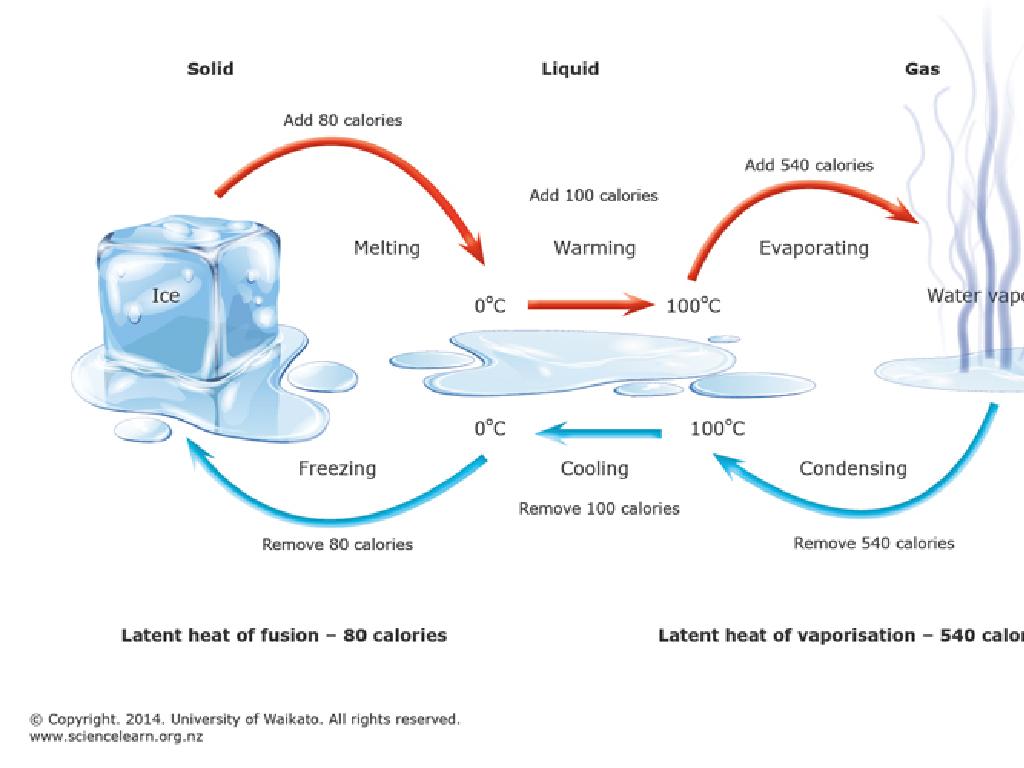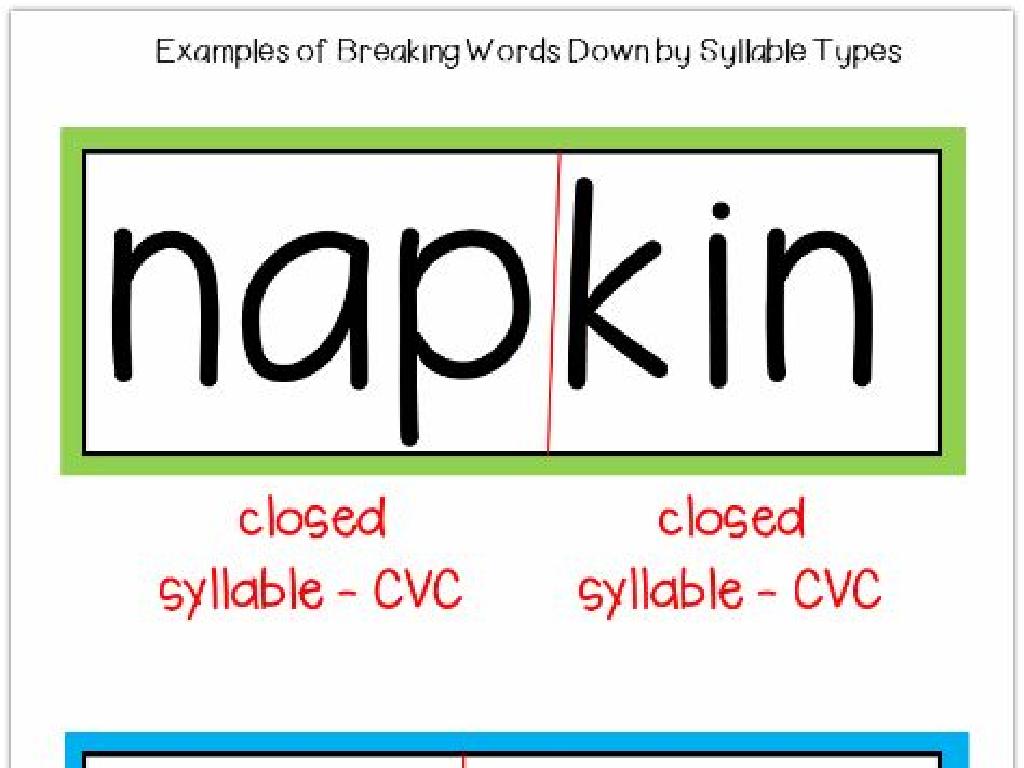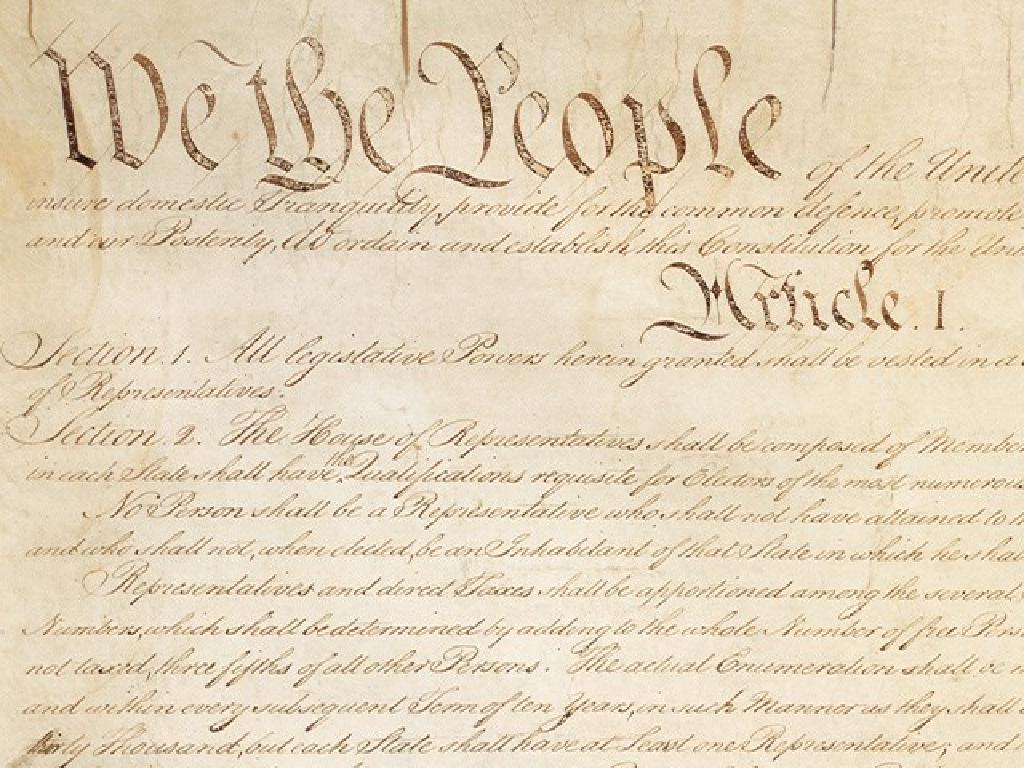Order The Words To Create A Sentence
Subject: Language arts
Grade: Third grade
Topic: Sentences, Fragments, And Run-Ons
Please LOG IN to download the presentation. Access is available to registered users only.
View More Content
Building Blocks of Writing: Crafting Sentences
– What is a sentence?
– A sentence has a subject, verb, and expresses a complete thought.
– Sentence vs. Fragment
– Fragments are incomplete sentences missing a subject or verb.
– Avoiding run-on sentences
– Run-ons are sentences that need to be split into smaller, complete sentences.
– Practice ordering words
– We’ll arrange words to make proper sentences.
|
This slide introduces the fundamental concepts of sentence structure to third graders. Begin by explaining what constitutes a sentence, emphasizing the presence of a subject and a verb, and the importance of expressing a complete thought. Contrast this with fragments, which lack one of these elements and do not form a complete idea. Discuss run-on sentences and how they can confuse readers by containing too many ideas without proper punctuation. Conclude with an interactive activity where students practice creating sentences from a jumbled set of words, reinforcing their understanding of sentence structure. This hands-on approach will help solidify the day’s objective and prepare them for more advanced writing tasks.
Building Blocks of a Sentence
– What defines a sentence?
– A sentence is a group of words that tells a whole idea.
– Sentences have subjects and verbs
– Every sentence needs a ‘who’ (subject) and a ‘what’ (verb).
– Sentences express complete ideas
– It’s not a sentence if it doesn’t give a full thought.
– Example: ‘The cat sleeps on the mat.’
– ‘The cat’ is the subject, ‘sleeps’ is the verb, and the whole sentence gives us a clear picture.
|
This slide introduces the concept of a sentence to third-grade students. Start by explaining that a sentence is like a complete puzzle, made up of words that fit together to make a full picture or idea. Highlight the importance of having both a subject (who or what the sentence is about) and a verb (what the subject is doing). Use the example provided to illustrate a simple sentence structure and encourage students to think of their own sentences. Ask them to identify the subject and verb in their examples. This will help them understand the basic components of a sentence and how they come together to express a complete thought.
Sentence or Fragment?
– What is a fragment?
– A fragment is an incomplete sentence.
– Example: ‘After the rain.’
– ‘After the rain.’ lacks a subject and verb.
– Missing pieces in a fragment
– Fragments lack a subject, verb, or complete thought.
– Turning fragments into sentences
– Add what happened after the rain to complete the thought.
|
This slide introduces the concept of sentence fragments, which are incomplete sentences. It’s crucial for students to understand that a complete sentence needs a subject, a verb, and to express a complete thought. Use the example ‘After the rain.’ to show students how this fragment is missing essential elements. Discuss what’s missing and brainstorm with the class how to turn it into a full sentence by adding a subject and verb, resulting in a sentence like ‘After the rain, the flowers bloomed.’ This exercise will help students identify and correct fragments in their writing.
Watch Out for Run-ons!
– What’s a run-on sentence?
– A sentence with too many ideas and no punctuation
– Example of a run-on
– ‘I love to write it is fun I write every day.’
– Fixing run-on sentences
– Use punctuation to separate ideas
– Practice correcting run-ons
|
This slide introduces the concept of run-on sentences to third graders. Begin by explaining that a run-on sentence is like trying to fit too many thoughts into one breath without taking a break. Use the example provided to show students how the sentence runs on without proper pauses or punctuation. Then, guide them on how to fix run-on sentences by adding periods, commas, or conjunctions to break up the ideas into separate sentences. Encourage students to practice this skill by identifying run-ons and correcting them, either in pairs or as a class activity. This will help them understand sentence structure and improve their writing clarity.
Building Sentences: Word Order
– Learning sentence structure
– Word order makes sense
– Words like a puzzle; they fit in a certain way to be clear.
– Unscramble words activity
– We’ll mix up words and you’ll put them right.
– Create a proper sentence
– Use clues from words to build sentences that tell a complete idea.
|
This slide introduces the concept of sentence structure and the importance of word order. Emphasize to students that just like putting puzzle pieces together in the correct order to see the whole picture, words in a sentence must be in a specific order to make sense. The activity involves unscrambling mixed-up words to form coherent sentences. For the activity, prepare a set of scrambled sentences on strips of paper or flashcards. Divide the class into groups and give each group a set of scrambled sentences to work on. Encourage them to look for the capital letter to find the beginning of the sentence and the punctuation mark for the end. After the activity, have each group share their sentences and discuss any challenges they faced. This will help them understand sentence structure and improve their grammar skills.
Unscramble the Sentence Activity
– Here are jumbled words
– Find the correct sentence order
– Let’s unscramble together
– Can you arrange ‘blue the is sky’ in order?
– Example: ‘The sky is blue.’
– ‘The sky is blue.’ is how it should look!
|
This slide is an interactive class activity designed to help students understand sentence structure by unscrambling words to form a coherent sentence. Start by presenting the jumbled words and ask the students to think about the correct order. Guide them through the process by suggesting they look for the capital letter to find the beginning of the sentence and the punctuation mark for the end. Work through the example ‘The sky is blue.’ together, explaining why this order makes sense. Encourage students to apply this strategy to other jumbled sentences they may encounter. For the activity, have students work individually or in pairs to unscramble sentences, and then share their answers with the class.
Practice Makes Perfect: Sentence Building
– Time to practice word order
– Pair up for sentence creation
– Work together to make sentences
– Arrange words into a sentence
– Use your word cards to build a sentence
– Present your sentences to the class
– Share what you’ve made with everyone
|
This slide is designed to engage students in a hands-on activity that reinforces their understanding of sentence structure. Students will work in pairs, which encourages collaboration and communication. Provide each pair with a set of word cards and instruct them to arrange the words into a coherent sentence. Emphasize the importance of word order in conveying the correct meaning. After the activity, invite pairs to share their sentences with the class, fostering a sense of community and public speaking skills. As a teacher, facilitate the activity by offering guidance and praise for their efforts. This exercise will help solidify the concept of sentence structure in a fun and interactive way.
Class Activity: Building a Story Together
– Form small groups for story creation
– Each student adds one sentence to the story
– Use correct sentence structure
– Start with a capital letter and end with a period
– Share your group’s story with the class
|
This activity is designed to reinforce the concept of sentence structure in a collaborative and fun way. Divide the class into small groups and provide them with a starting sentence to build upon. Encourage each student to contribute by adding their own sentence to the group’s story. Remind them to use what they’ve learned about starting sentences with a capital letter and ending with a period. Also, emphasize the importance of the sentences making sense together to form a coherent story. At the end of the activity, invite each group to share their story with the class, celebrating their teamwork and creativity. Possible variations of the activity could include using a specific set of vocabulary words, focusing on a particular theme, or challenging students to use complex sentences.
Wrapping Up: Sentences and Fragments
– Congratulations on learning sentences!
– Recall: Sentences need a subject and verb
– A subject does something (verb), like ‘The cat (subject) sleeps (verb).’
– Journal writing as practice
– Write about your day using full sentences.
– Avoid fragments and run-ons
– Fragments and run-ons don’t express complete ideas.
|
Great work today, class! We’ve learned that a complete sentence must have a subject and a verb to express a full idea. Tonight, I’d like you to practice this by writing a journal entry about your day. Make sure to use complete sentences and check that each one has a subject and a verb. Remember, fragments are incomplete thoughts, and run-ons are too many ideas without proper punctuation. Let’s avoid those. I’m looking forward to reading your journal entries and seeing how you’ve applied what we’ve learned!





